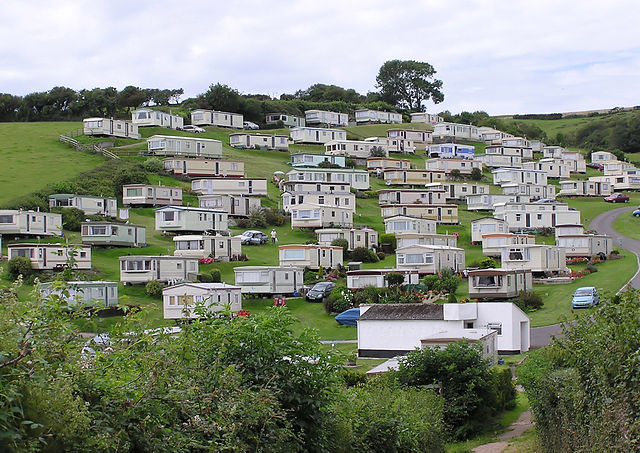
SCP-2379
Roach Motel

SCP-2379 infestation site prior to its decontamination.
Special Containment Procedures
Foundation agents embedded in meteorological agencies in the United States, Mexico and El Salvador are to monitor any potential hurricanes or other extreme weather. In the event that such weather develops, agents are to destroy all suspected infestation sites via incineration. Samples for research purposes are currently housed within Site-19 and Site-77.
Monitoring of police reports and social media related to mobile home facilities are to be monitored for signs of SCP-2379's presence. Algorithms recognizing keywords frequently used to describe SCP-2379 infestations by civilians have been placed in major search engines to alert Foundation agents of possible infestation sites. These sites are to be dismantled and decontaminated by members of MTF-Psi-7 "Home Improvement".
Any advanced infestations of SCP-2379 are to be destroyed via aerial incineration. Due to the ongoing presence of SCP-2379 infestations across multiple jurisdictions, agents operating in these areas must be prepared to enact basic containment of SCP-2379 and prepare them to be decontaminated.
Civilians exposed to SCP-2379 are to be issued Class-C amnestics and enrolled in substance abuse recovery programs under the guise of an opiate addiction.
Description
SCP-2379 is an anomalous species of fungus, found primarily around population centers within North America. Instances of SCP-2379 most frequently resemble mobile homes, but other instances resembling mother-in-law cottages and rows of portable toilets have been discovered. Additional growths resembling lawn ornaments, welcome mats, and crude humanoid figures have also been documented.
When subjected to hurricane-force winds or similar weather conditions, SCP-2379 structures will dissociate and produce several hundred spores. Approximately 3% of these will survive, and reach their maturity within 24 hours of germinating. Mature instances of SCP-2379 are hollow, with test subjects describing the floors and walls as spongy. Occasionally growths resembling tables, chairs and kitchen sets are produced, although these are usually crude and unconvincing. Instances of SCP-2379 are fully mobile, using groups of small mycelium bundles to move.
In order to entice an inhabitant, SCP-2379 will begin to produce an aerosol which induces euphoria in exposed subjects. This gas has addictive properties, and subjects affected by it are susceptible to suggestion and have difficulty with motor coordination. This effect is more pronounced in elderly subjects affected by SCP-2379. It has been documented as affecting individuals up to 4 km away from the SCP-2379 infestation.
Subjects inhabiting SCP-2379 frequently attempt to convince any subject not currently residing in an SCP-2379 to move in. Individuals choosing to live in SCP-2379-affected buildings generally become more distrustful of outsiders and encouraging self-sufficient lifestyle choices such as growing food and producing their own tools.
When the population of an SCP-2379 settlement reaches approximately 200 residents, all buildings will uproot themselves to begin traveling towards the largest and closest population center. Upon arriving, any uninhabited SCP-2379 instances will dissociate into spores, which will then infest all nearby structures. These buildings will be disassembled by fibrous fungus, and the materials apparently used to produce more complex structures such as hotels, motels, boarding homes, condominiums, and small businesses with residences. Eventually, the individual SCP-2379 instances will interconnect with one another and form an insular system.
Once the SCP-2379 infestation has used all the available construction materials, it will begin moving towards the next largest urban population center and repeat the process. There is no known upper limit on the size that SCP-2379 infestations can reach.
History: Development of SCP-2379 began in 1982, as a project by an independent group of mycologists in collaboration with Prometheus Labs, in order to create sustainable self-perpetuating housing out of fungus. Funding was provided by Prometheus Labs, which also provided fungal research materials and material support.
In 1991, instances of SCP-2379 germinated and took the form of standalone research labs. After several fatalities, Prometheus Labs attempted to evacuate the facility. This was unsuccessful due to resistance from the staff members, and it is believed their behavior was influenced due to their long-term exposure to SCP-2379. Prometheus Labs personnel destroyed all infested materials via incineration and detained the resisting staff members.
The Foundation became aware of Prometheus' connection to SCP-2379 after that company's collapse and is currently investigating the location of several of the associated researchers. It is believed that the current presence of SCP-2379 in the wild is due to an outside party obtaining samples of SCP-2379 after Prometheus Labs collapsed.
